Thanks to all who came out to Figment Boston 2014 and shared your thoughts about being simultaneously alone and together. Here my favorite photos from the day. Others can be found on the project gallery.
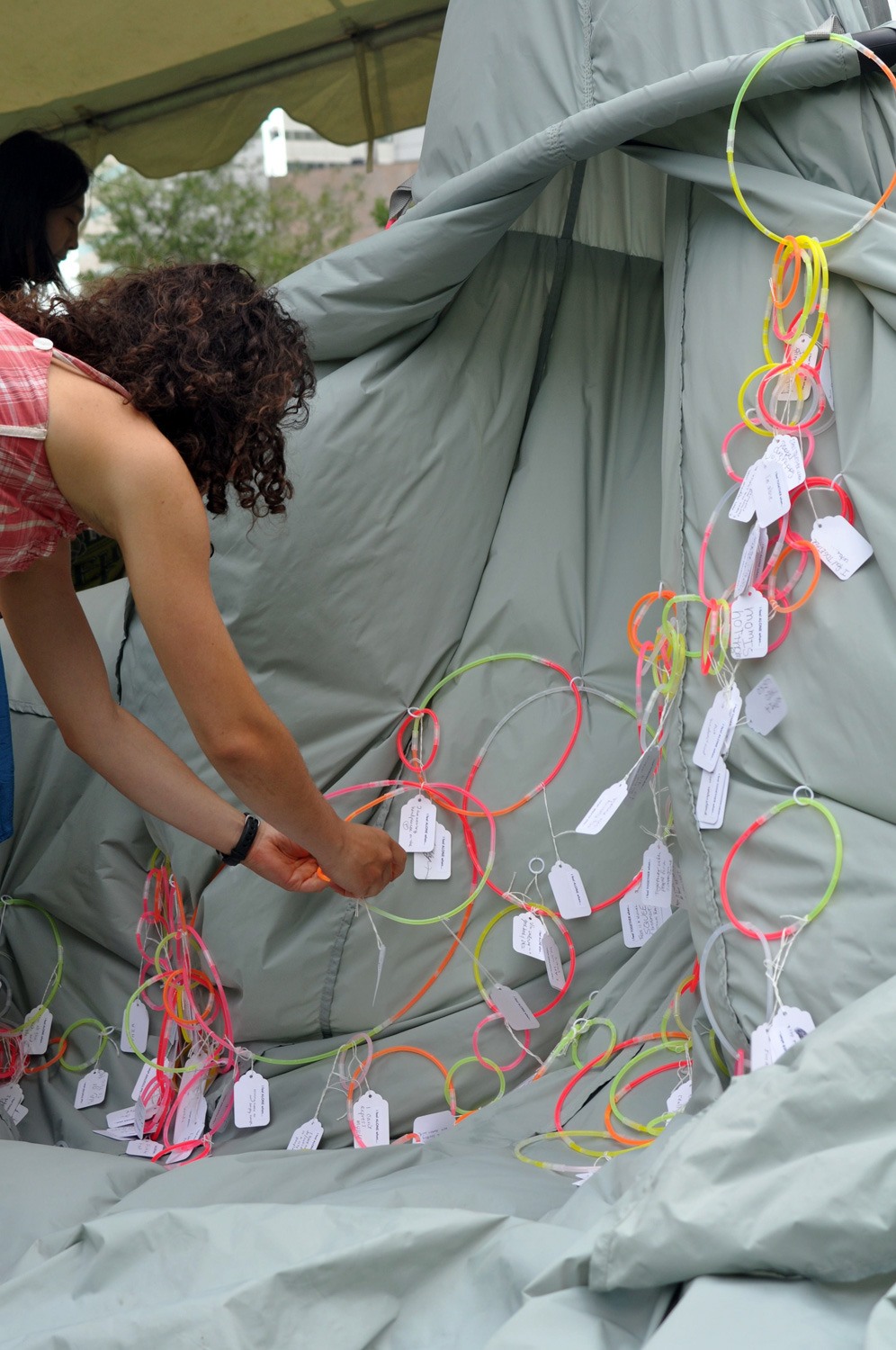
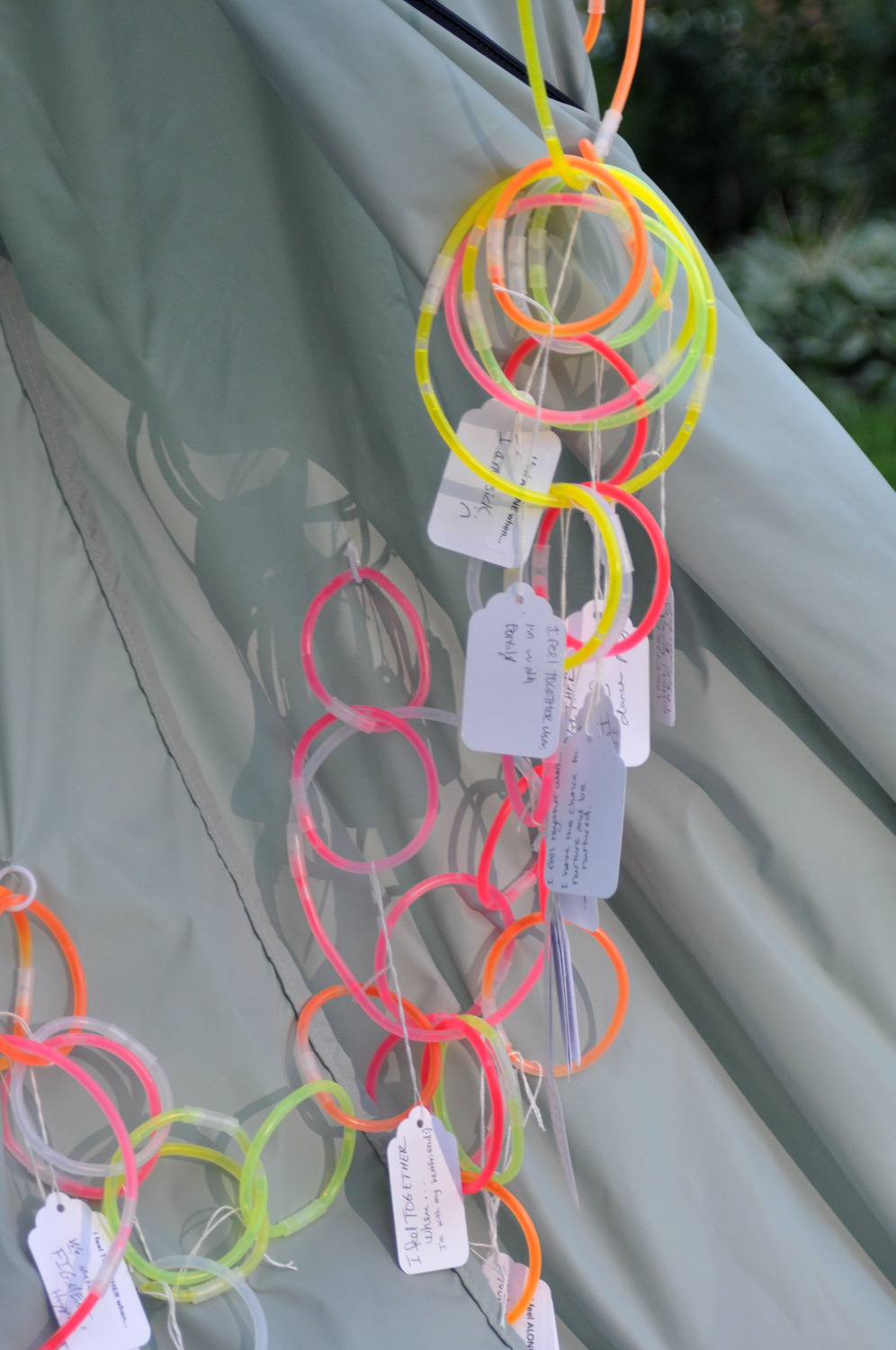

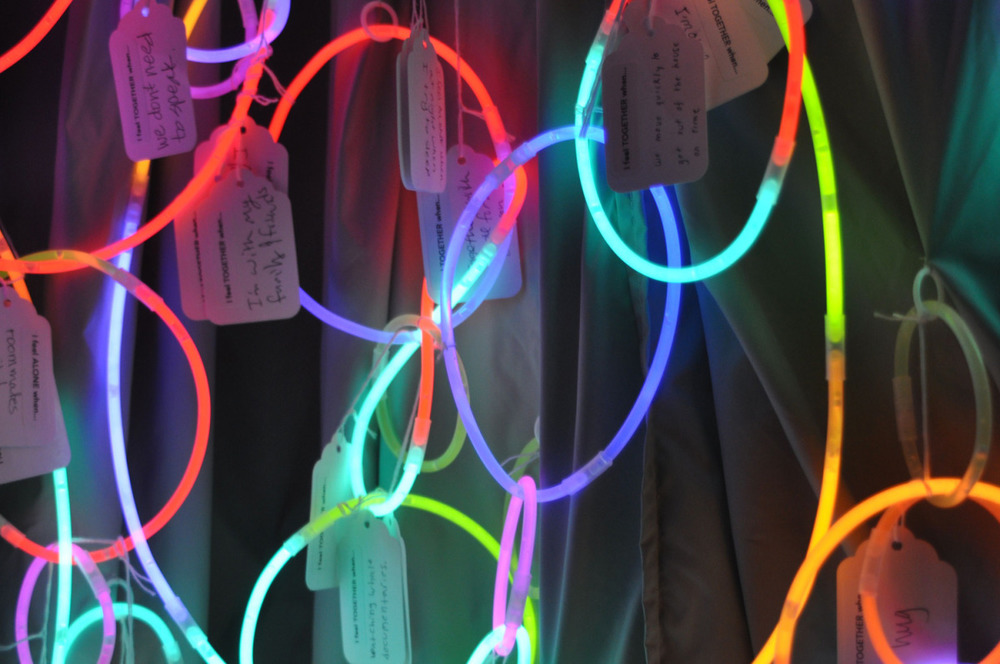
Thanks to all who came out to Figment Boston 2014 and shared your thoughts about being simultaneously alone and together. Here my favorite photos from the day. Others can be found on the project gallery.




I can't wait to share the Alone Together dress at FIGMENT Boston on Sat. July 26 in it's new participatory form.
When: Saturday, July 26, 12—8pm
Where: Rose Kennedy Greenway in three TBD locations in the Wharf District Parks; directions
Alone Together is a participatory sculpture and performance that provides a place for reflection while also creating an accumulation of artifacts representing our collective feelings about being simultaneously alone and together. The sculpture, a dress-to-tent wearable, is worn by the artist and erected with a centering ritual. We’re then encouraged to enter the tent and add a message about what it means to be alone/together and connect segments of glowsticks to create a collective drawing. Once the walls are covered, remnants are woven together, left on location, the tent moves and the process repeats.
FIGMENT Boston is returning for a fifth year on the Rose Kennedy Greenway. FIGMENT seeks to continue its mission to offer free, inclusive and participatory art to entire communities, removing the barriers of museum and gallery walls and entrance fees and blurring the lines between those who create and those who enjoy art.
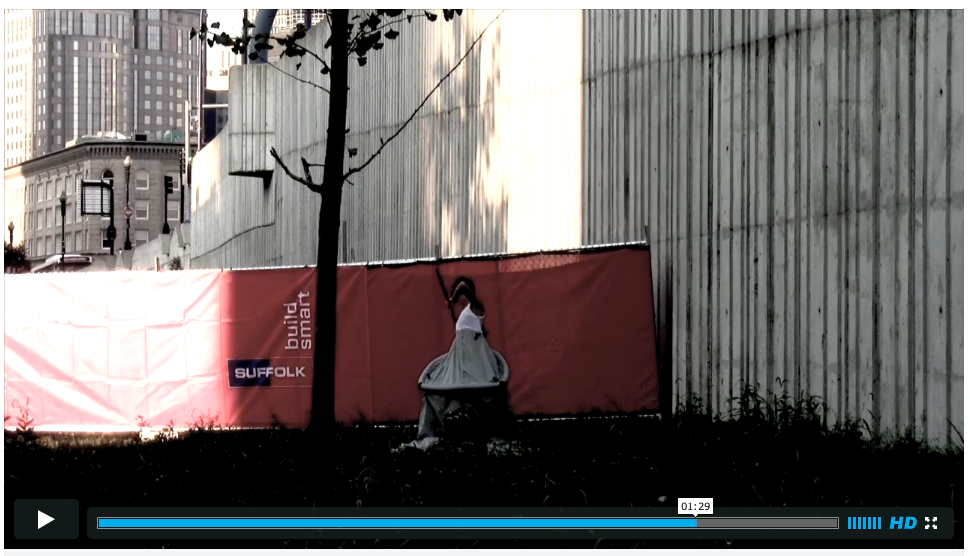 still from Alone Together
still from Alone Together
Last night about 15 friends and neighbors gathered to discover hidden text and discuss the layers of history in the Fort Point that inspired I Wandered.
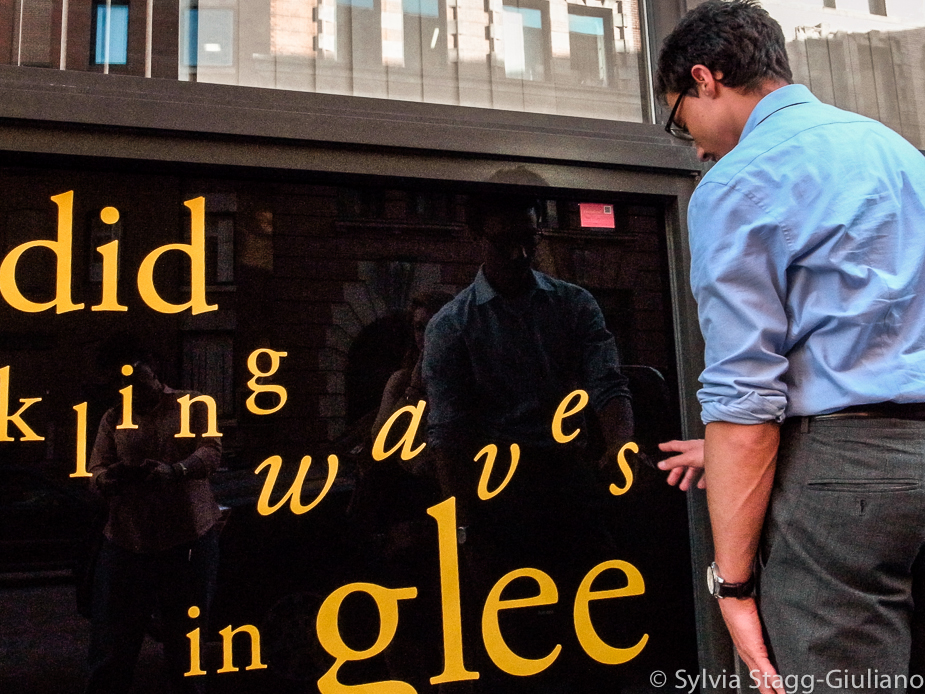
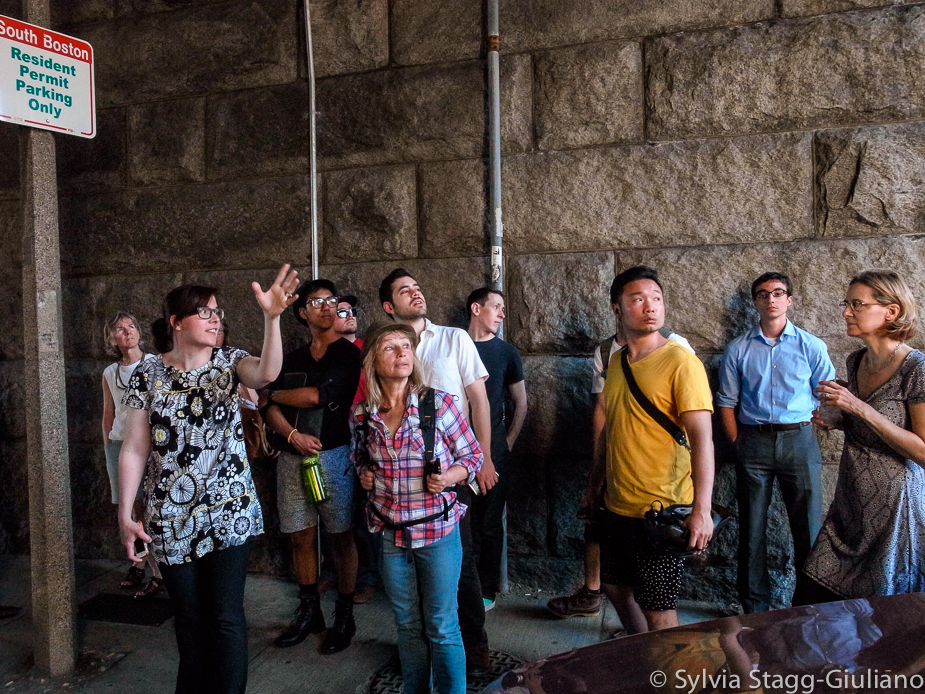 photos: Sylvia Stagg-Giuliano
photos: Sylvia Stagg-Giuliano
I remember that day 20 years ago as if it was yesterday. Professor George Willauer the tweed-wearing veteran chair of the Connecticut College English Department — and also the man who inadvertently propelled me into the visual arts by destroying all hope that I could be a writer — smiled broadly as he began the first line:
I wandered lonely as a cloud.
That floats on high o'er vales and hills,
When all at once I saw a crowd,
A host, of golden daffodils;
By the end of his recitation of William Wordsworth’s “I Wandered Lonely As A Cloud”, and his rhapsody about snapping out of a vacant or pensive mood I too had snapped out of my sardonicism. F'ing Wordsworth got it! What it’s like to wander in your own identity landscape and stumble upon a long forgotten visual. All the way back in 1807 he got that and he got the small miracle of spring.
And so every spring right before I think I can't take it any longer, when those brave daffys are being bantered about by hail and April showers, the poem begins playing in my mind: I wandered lonely as a cloud…I wandered lonely as a cloud…I wandered lonely as a cloud.
This weekend I Wandered a collaboration with Karen Stein Shanley of GoodGood will open and we’ll all get to share in the profundity of wandering, of observing our geography/place, and reconnecting with the lost art of meditative walking. Select phrases from the poem and graphics will be in six different spots around the Fort Point neighborhood. Check out iwandered.me for the entire poem and exact locations.
Rest in peace professor Willauer. May jocund company surround you always.
A few months ago I sat down with my stepson Emmett to help him practice for a history class presentation on cultural artifacts from the Concord Museum’s Americana collection. He’d chosen Henry David Thoreau’s spyglass for its significance in Thoreau’s research on native species and climate change. Though the spyglass was an extravagant purchase for the naturalist and scholar, it gave Thoreau new insight into the natural world as observed from his cabin in Concord, MA and recorded in Walden (1854). Today, scientists use his daily environmental recordings in climate change modeling.
Little did I know that a seed had been planted that day.
Currently up through July 6 in “nostalgia” at FPAC Atlantic Wharf Gallery is my version of the spyglass, a loop of 40 landscapes that show no humans, no human artifacts, no roads, and no houses. A new instrument for recording nature is created when pirated landscape photos from Instagram coded #nature or #landscape are projected onto a pad of paper. Pictures tinged with instant-age effects, overly saturated colors, and vintage filters trigger a longing for a virgin landscape free of human intervention – a landscape that probably never existed and by Thoreau’s time was certainly already under pressure from human intervention and ignorance.
 details: (r) trophy stand, model turf, brass (r) projected imag
details: (r) trophy stand, model turf, brass (r) projected imag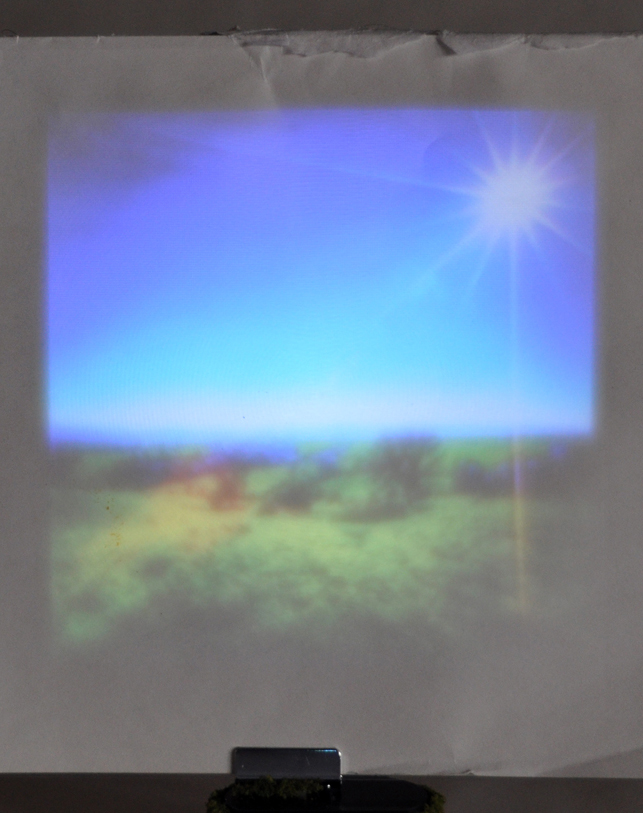
 "Spyglass", 2013. Paper, glass, trophy stand, model turf, brass, mini LED projector, SDHC Card, and digital images sourced from Instagram.
"Spyglass", 2013. Paper, glass, trophy stand, model turf, brass, mini LED projector, SDHC Card, and digital images sourced from Instagram.
The 34th annual Fort Point Open Studios is coming up soon—October 18–20—and I'll be opening my studio to share some new paintings and video. I'm happy to announce that during that time Elisa Hamilton and I will also be presenting Story Lines, an interactive sculpture that encourages viewers to physically and emotionally engage in reshaping our narratives.

FORT POINT OPEN STUDIOS
WHEN:
Friday, Oct 18, 4–7PM
Saturday, Oct 19, noon–6PM
Sunday, Oct 20, noon–6PM
WHERE:
My studio is #A4 in the basement of 300 Summer Street Boston MA 02210. Direct access from A Street, under the Summer St. bridge. Google map: http://goo.gl/maps/ilzs6.
Story Lines will be outside along the Harborwalk.

Right before officially departing my SMFA studio, I documented the installation of the Rogue Tent with a mini HD camera and tripod. It was a simple affair but a nice way to say goodbye. I'll miss that little time-out tent and hope to repurpose it soon. Check it out on Vimeo.
Rogue Tent: a studio intervention from Kate Gilbert on Vimeo.
Today I completed the last requirement for earning my MFA from School of Museum of Fine Arts, Boston by submitting my Hide:Seek documentation and catalogue.
I'd like to thank my thesis committee (Barbara Gallucci, Nick Capasso and Jeannie Simms) for sharing their wisdom and Joseph Carroll for opening up his gallery to me. And to my family and friends: thanks for playing along with me!
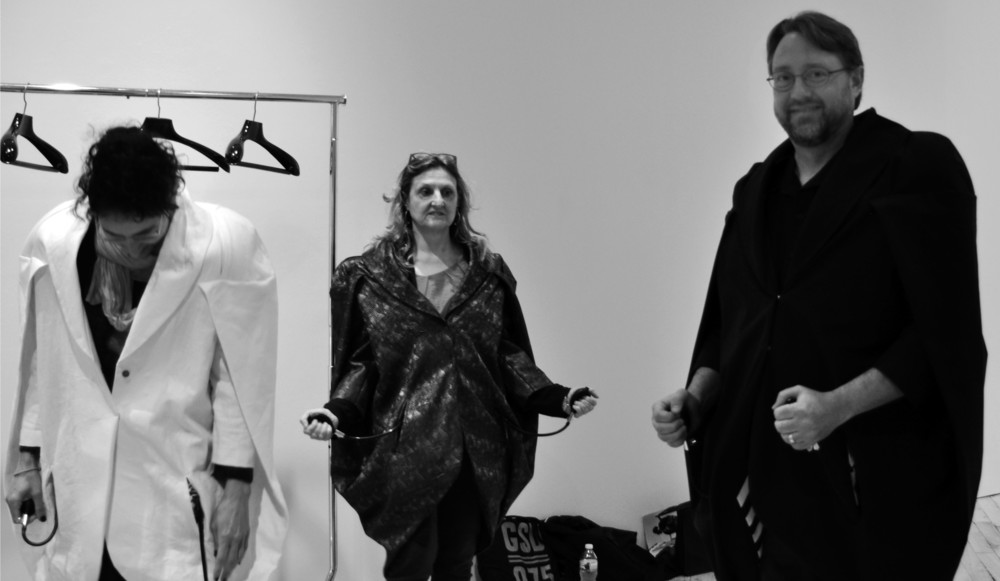 thesis committee or everyday super heroes?
thesis committee or everyday super heroes?